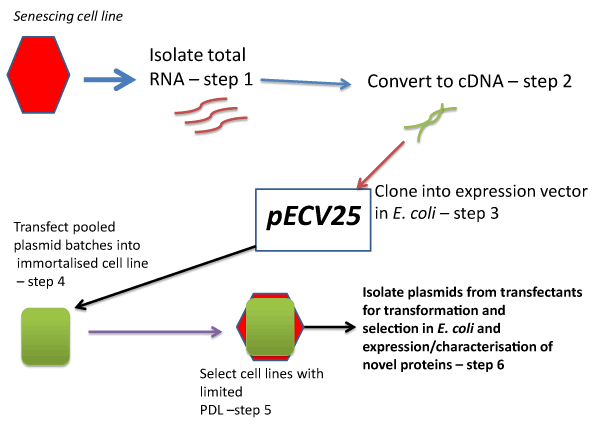
 |
| Figure 3: Novel ‘shuttle’ analysis for determination of factors mutated or deleted in immortalised cell lines. In this scheme total RNA is extracted from senescing cell lines. This is then converted into cDNA and cloned into the shuttle expression vector, pECV25 (see text). Plasmids are isolated from individual bacterial clones and pooled into groups of 50 and used to transiently transfect a selected immortalised cell line. Individual transfectants demonstrating limiting PDL are selected and plasmid DNA extracted. This can then be transformed back into E. coli and DNA from selected clones repeat transfected into immortalised cells in order to establish unique transfectants. Alternatively, plasmid DNAs extracted from the first-round of transfection into the immortalised cells can be nick labelled and dot-blot hydridized against the E. coli colonies enabling unique inserts to be delineated – after firstly hybridizing against excess unlabelled vector. These clones can be confirmed as carrying sequences that disable cellular immortalisation by the second round of transfection into an immortal cell line. Suitably isolated plasmid clones can be analyzed to determine the nature of the insert and proteins can be expressed and function assessed. |